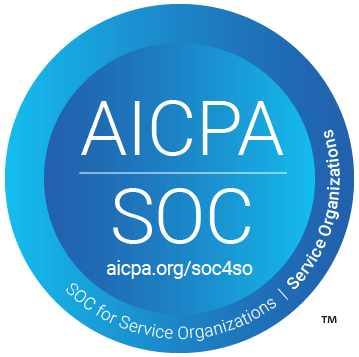Most healthcare marketing strategies are built for single locations. They assume unified messaging, consistent patient experiences, and straightforward decision-making processes. But when you’re responsible for marketing across multiple hospitals, ambulatory centers, or an entire health system, these assumptions break down quickly.
The challenges multiply with each location. Different communities have different health needs and competitive landscapes. Local physicians may have established referral patterns that don’t align with system-wide growth priorities. Marketing campaigns that work brilliantly in one market fall flat in another. And perhaps most frustratingly, what looks like marketing success at the system level might be masking significant problems at individual locations.
Healthcare organizations that have successfully scaled their marketing across multiple locations don’t just replicate their single-site strategies; they recognize that what works at one location might fail at another, so they adapt to different markets while maintaining overall coherence where applicable.
The Centralization Trap
The most common mistake in multi-location healthcare marketing is assuming that centralization automatically creates efficiency. Health systems and large medical groups often start by standardizing everything: same messaging, same campaigns, same success metrics across all locations. The logic seems sound: reduce redundancy, maintain brand consistency, and achieve economies of scale.
But a centralized approach often backfires in healthcare marketing. Communities have different demographics, health priorities, and competitive dynamics. A campaign promoting cardiac services might perform well in an aging suburban market while failing completely in a younger urban area where mental health and urgent care drive patient decisions.
The bigger issue with centralized approaches is that they overlook how healthcare decisions actually get made. Patients don’t choose providers based on system-wide brand promises. They choose based on local reputation, relationships with specific physicians, and word-of-mouth recommendations from their community. These local factors can’t be standardized across locations, and marketing campaigns that ignore them often miss their intended audience entirely.
The key to multi-location growth is learning how to balance system-wide coordination with local adaptation. It’s crucial to maintain consistent quality standards and brand identity while allowing for adjusted messaging for individual locations based on their unique attributes.
 The Local Knowledge Problem
The Local Knowledge Problem
Every healthcare market has invisible dynamics that only become apparent through local experience. Referral patterns between primary care physicians and specialists. Community health priorities shaped by local demographics and employers. Competitive relationships that influence patient perceptions. Historical events that affect trust in certain healthcare brands or services.
This local knowledge is often concentrated in individual physicians, location managers, and front-line staff who understand their communities but may not have the marketing expertise to translate those insights into effective campaigns. Meanwhile, system-level marketing teams have strategic skills and resources but lack the granular understanding of what actually drives patient decisions in specific markets.
The solution for this is to create systematic ways to capture and leverage that local knowledge. Instead of relying on location managers to implement centrally designed campaigns, create feedback loops that allow insights to inform system-wide strategy and enable local teams to adapt campaigns based on community-specific feedback.
This might involve regular communication between system marketing teams and local leadership, structured processes for collecting market intelligence from individual locations, or technology platforms that allow local teams to customize campaigns while maintaining brand consistency and compliance standards.
But even when organizations successfully capture and leverage local knowledge, they often struggle with another fundamental challenge: measuring success across diverse markets.
The Predictive Advantage
Even with strong feedback loops between system and local teams, there’s a limit to how much human intuition alone can uncover. This is where predictive analytics and AI-powered patient targeting change the game. By analyzing thousands of unique data points, machine learning models can identify which patient segments are most likely to need specific services.
Instead of running broad campaigns and hoping they resonate, marketing teams can launch hyper-targeted campaigns that speak directly to the right patients at the right time. It doesn’t replace the insights of community physicians or managers; it amplifies them by surfacing patterns no individual could spot on their own.
The Metrics Misalignment Challenge
Traditional healthcare marketing metrics become problematic when applied across multiple locations. System-wide averages can hide significant variation between individual sites. A marketing campaign that drives strong ROI overall might be highly successful in some locations while completely ineffective in others. Location managers might be frustrated by campaigns that don’t work in their markets, while system-level teams celebrate aggregate results that mask underlying problems.
This creates tension between local accountability and system performance. Location leaders want marketing support that demonstrably helps their specific site grow, while system executives need to justify marketing investments based on overall organizational outcomes. When these perspectives aren’t aligned, marketing efforts become less effective and buy-in from local teams diminishes.
Organizations that excel at multi-location marketing develop measurement frameworks that provide visibility at both system and location levels. They track how individual campaigns perform across different markets, identify which strategies work best in different types of communities, and adjust resource allocation based on location-specific ROI rather than system-wide averages alone.
This granular measurement approach reveals patterns that aren’t visible in aggregate data. Some locations might excel at attracting new patients but struggle with retention. Others might have strong local loyalty but need help reaching new patient segments. Different service lines might perform differently across markets based on local competitive dynamics and community health needs.
These insights create both opportunities and dilemmas. When you can see exactly how each location performs and why, the question becomes what to do with that information.
 The Resource Allocation Reality
The Resource Allocation Reality
Multi-location healthcare organizations constantly face decisions about where to invest marketing resources. Should they focus on locations with the highest growth potential, support struggling sites that need help, or maintain consistent investment across all locations regardless of performance?
These decisions become more complex when local factors are considered. A location with lower marketing ROI might be serving a critical community health need or facing temporary competitive pressures. A high-performing location might be succeeding despite poor marketing support rather than because of it. Without clear frameworks for making these trade-offs, organizations often default to equal distribution that doesn’t optimize for overall system growth.
The most successful multi-location organizations develop strategic approaches to resource allocation that balance system-wide objectives with local market realities. They might invest more heavily in locations with the greatest growth potential while maintaining baseline support for all sites. They might allocate resources based on local competitive intensity rather than current performance. Or, they might prioritize locations that serve strategic patient populations or support key service line growth.
These decisions require data about local market dynamics, competitive positioning, and growth potential that goes beyond traditional healthcare marketing metrics. Organizations need to understand not just how their locations are currently performing, but why they’re performing that way and what factors might influence future success.
The Technology Integration Imperative
Managing marketing across multiple healthcare locations requires technology platforms that can handle complexity while maintaining compliance and brand consistency. It’s important that systems allow for local customization without sacrificing system-wide visibility and control.
This is particularly challenging in healthcare because of regulatory requirements that vary by location and service type. A campaign that’s compliant in one state might violate regulations in another. Patient data that can be used for marketing in one context might be restricted in another. Marketing teams need technology that helps them navigate these complexities rather than creating additional compliance burdens.
The most effective platforms for multi-location healthcare marketing integrate campaign management, patient feedback collection, and performance measurement while maintaining appropriate privacy protections and regulatory compliance. They enable local teams to adapt campaigns for their markets while ensuring that all marketing activities meet system-wide standards and compliance requirements.
Healthcare organizations are also beginning to integrate Predictive Patient Targeting powered by AI. These capabilities take the guesswork out of local adaptation by analyzing patient data, demographics, and trends, then suggesting where and how to focus campaigns. The result is scalable precision: system-wide platforms that still deliver locally relevant impact.
These same platforms must also handle the data complexity of multi-location marketing. Patient feedback needs to be rolled up at the system level while remaining actionable locally. Campaign performance must be visible across markets, with the ability to drill down into location-specific drivers of success. Compliance monitoring must account for variations in local regulations without creating an additional burden for marketing teams.
 Building Systems That Scale
Building Systems That Scale
The healthcare organizations that achieve sustainable multi-location growth create marketing systems that become more effective as they expand rather than more complex. They develop processes that capture and share learnings across locations, technology platforms that handle complexity without creating bottlenecks, and measurement frameworks that provide actionable insights at both system and location levels.
These systems typically include structured ways to collect and analyze local market intelligence, standardized processes for campaign development and deployment that allow for local adaptation, and performance measurement that provides visibility into both aggregate results and location-specific factors that drive success.
Perhaps most importantly, they create organizational cultures that value both system coordination and local expertise. Marketing teams understand that their role is to support location success rather than impose centralized solutions. Location teams understand that their local insights contribute to system-wide learning and improvement.
The Path Forward
Multi-location healthcare marketing isn’t just about scaling what works at single sites. It requires completely different approaches to strategy development, resource allocation, technology deployment, and performance measurement.
Luckily, complexity can be a source of strength rather than just a challenge to manage. Organizations with multiple locations have more opportunities to test different approaches, more data to understand what drives patient decisions, and more ways to adapt to changing market conditions. But capturing these advantages requires systems and strategies designed specifically for multi-location environments rather than single-site approaches applied at scale.
For healthcare marketing leaders responsible for multiple locations, the opportunity is significant. The organizations that solve the challenges we discussed can build more resilient, more adaptable marketing capabilities that create lasting competitive advantages across all their markets.











